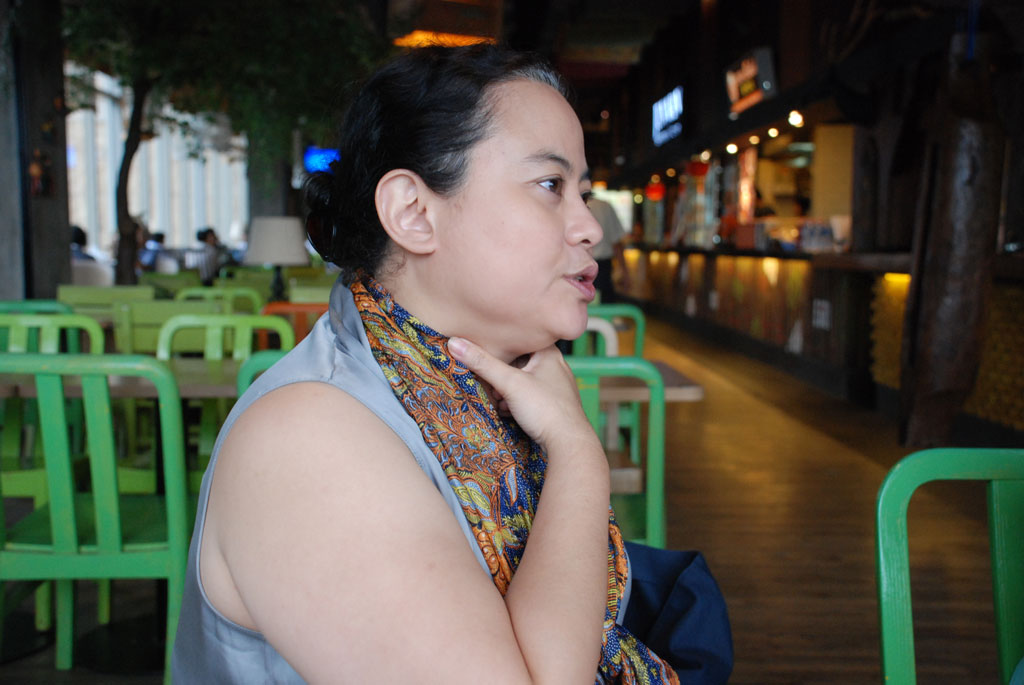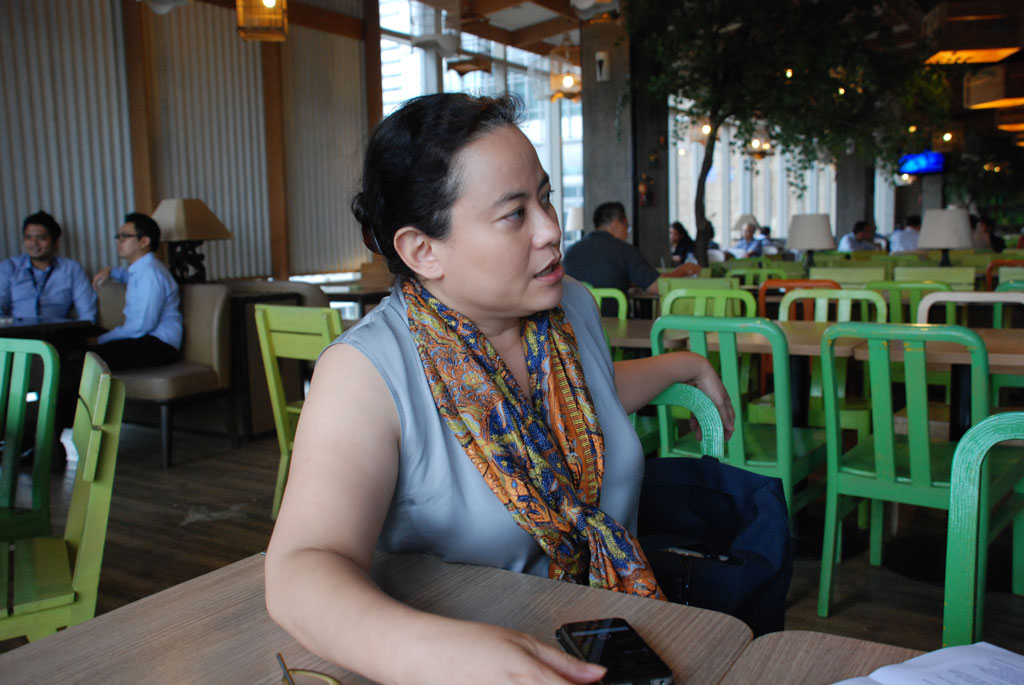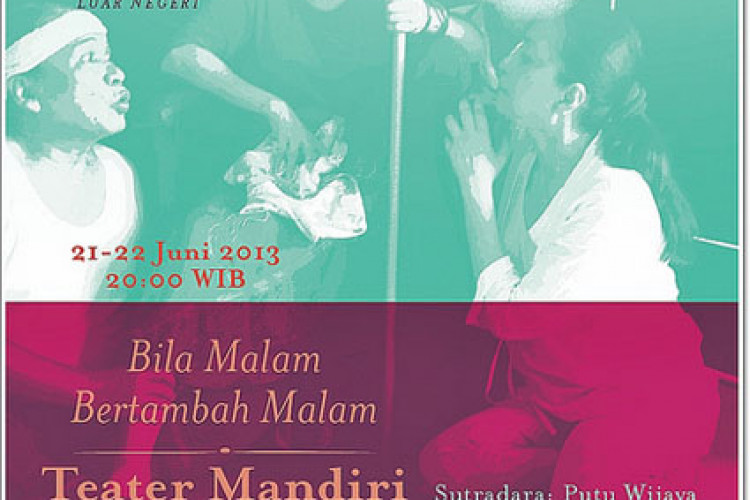Indonesia and Film with Shanty Harmayn
Mariati Galatio (M) talks to creative producer Shanty Harmayn
by Ken Jenie




M
You formed JiFFest in 1999 with Natasha Devillers, what was the goal when you first conceived it?
S
JIFFest was a combination of being part of the Indonesian reformation and the development of technology. There was this freedom of expression that people sought and that was in tandem with the growth of the Internet. Reformation in Indonesia coincided with the Internet boom – making people’s artistic expressions accessible.
People back then had access to information, but not necessarily to films. Natasha and I were both filmmakers, making us part of a film-loving community that knew a lot about what was being produced but did not have access to them.
Simply as a need to see these films, we wanted to bring world cinema to Jakarta. Some European films were starting to be screened in Indonesia, but Asian films were not. Southeast Asian, Chinese films, Iranian – the rest of the world, basically (laughs). Bringing those films to Jakarta was the simple, initial idea.
M
Now 14 years after the initial JIFFest, would you say it has achieved its goal?
S
To a certain extent, yes. We have achieved in bringing world cinema to Jakarta.
M
During those 14 years, what changes have you noticed in the scene – the genre, filmmakers, filmmaking?
S
We have witnessed so many changes the past 14 years – in high speed (laughs). We [JIFFest] basically grew up with local film industry. We also program Indonesian films, so we experienced from only having 2 Indonesian films, to 10, to 30 to 40.
M
In the past two years JIFFest went on hiatus before returning this year on a smaller scale. With these changes, is the festival heading in a different direction?
S
Running a not for profit cultural event is a challenge because we do not have a stable infrastructure for financing. Through out the first 10 years we were heavily subsidized by overseas development funds because development agencies saw it as an event that nurtures culture, freedom of expression, media literacy – it was always under that point of view/framework. After ten years, we were supposed to be self-sustainable, but in reality we weren’t. Lesson learned.
We always ask, whose responsibility is the local film industry’s infrastructure? Looking at all the changes that have happened – in technology and dynamic of the city [Jakarta]. If I were to implement the format of the 1999 festival, I don’t believe it would be suited for today’s Jakarta – so many items have changed. During the hiatus, we addressed how we can be financially stable as a cultural event and how we are going to make a comeback as well as consistently continue JIFFest.
M
In an interview in the BBC you mentioned that Indonesia has an Internationally relevant film industry and we need the government to build an infrastructure. How does the film industry function at the moment, and what role would the government take in creating this infrastructure?
S
Right now there are about 80 films produced per-year, and if you look at the box office number it is not uplifting – it is quite low. But regardless of the numbers there are still 80 films being produced every year. What this means is that there is an interest from financiers; they believe it is a potential market. Why should they keep pumping money, making the bet? Everybody sees the potential, so what we have to do is meet that potential.
It’s not just the local market. Even the neighboring studios, international producers – they’re looking to enter this market, especially right now with Indonesia’s growth of consumption.
Next we have to look at how we can get the best capacity out of this market? How do we make these investments work – meaning making better quality films, getting better access to the audience, making the audience trust Indonesians films more. We have reached the quantity, next is the content.
We are also under-screened – we have about 200 million people and only 900 screens. If you look at the number of China’s screen growth rate, it’s amazing. Malaysia has almost the same number of screens as us with less population.
There should be an incentive for big businesses to invest and become players in this market. Also, I believe the government should facilitate and groom talent. They shouldn’t produce films; they should instead give money to talented filmmakers to create. Treat the filmmakers and their ideas as start-up businesses.
M
Has the government facilitated the film industry here?
S
I believe the government has sporadically invested in the film industry, but not on a long-term scale – which doesn’t create a big impact. There should be mapping – reviewing the industry’s elements and look for the quick and long-term wins.
Let’s talk about Korea for example – they started investing in their talent since 1996 and look at where they are now. They export K-Pop, Korean Drama, ideas – look at how many Korean films are being remade in Hollywood.
The government’s approach has been a bit too insular. We need to address both a short-term and long-term solution.
M
There are films such as “Raid Redemption” and “What They Don’t Talk About When They Talk About Love” getting screened worldwide, as well as directors such as Edwin and Garin Nugroho getting their films screened in festivals. Would you say that Indonesian films have become internationally recognized?
S
Absolutely, but they worked so hard as individuals to get there. We are all lone rangers. If we were Koreans, all the films you mentioned would already be in every cinema… the point is, it took a lot of effort for those filmmakers to get where they are. If we had a system in place, you can imagine the impact the films would have made.
For me, going international is not just about getting screened in festivals. Going international is when your film is distributed in over 10 countries theatrically.
M
What do Indonesian moviegoers look for in Indonesian films?
S
Indonesian moviegoers are savvy. With the information available online you can watch trailers of world films, you can compare what’s good and what’s not. I believe people want to see more Indonesian films, to see more skill in our craftsmanship.
M
Is there a different standard in watching Indonesian films than, let’s say, Hollywood films?
S
Yes, of course. Different audiences have different ways of judging films – some people like drama, some people like action.
M
Concerning your work, you do a lot of art house films, which are more difficult to get funded. What is your approach to making these films, and what are the qualities you look for to produce them?
S
I started making art house films because I like the stories and I wanted to work with filmmakers that I respected. When you work in art house, you need to believe in what the film is trying to say. The target is never about making money, in this case. Producing films such as this is really about your passion, what you want to share.
If you were a producer who is purely a businessman, then you would not make art house. I am a filmmaker first – I define myself as a creative producer. If I was a pure, 1000 percent-business person… it’s tough, it’s too tough, it takes years off your life (laughs).
M
Is there a film that you have produced you really love?
S
The Dancer (Sang Penari). It was a personal journey for me.
M
As a producer, how do you maintain the quality of the production? Is there a system that you do?
S
I can do it if my budget is big (laughs). I’m kidding. Production value is very important to me as a producer. You want to maintain a certain quality – from the look, the story, to the collaboration between the directors and actors. When the film is put together you can see its value. As a filmmaker watching a movie you will often think “wow, that was well written” and “it must have taken effort to do that” whether it is technicalities or location challenges – you can tell by watching.
As to how to maintain it, you have to love making films, that’s really it. We pick the stories, sometimes you have to rewrite the story with your writer, find the money, deal with the cash flow, deal with project management, facilitate the actors so that can shine. A producer is a storyteller, a psychologist, an accountant, a salesperson – that’s producing (laughs).
M
With that said, is there a field in filmmaking you would like to dive into?
S
Initially I wanted to direct, because I was trained as a documentary director. But I suppose because I have a banking background – I started out working in a bank, then as a strategic planner at an advertisement agency. I somehow got pushed into the role of a producer, so I just embraced it – it’s my destiny (laughs). I love it, though; I get adrenaline and satisfaction from it.
M
In a “Kompas” article, you mentioned you watched videos everyday after your father’s friend lent around 1000 films that turned out to be filled with academy award-winning films. Would you say that this experience influenced your sensibilities and leanings towards making art house films?
S
What I watched was not just art house films, it was everything across the board. It started in elementary school and carried over until, at least, junior high school. I remember my friends in school would say “I don’t understand you” and “you’re crazy” because I was speaking in film jargon (laughs).
There was a film called “Blow Up” by Antonioni that I saw in elementary school, so I was confused at times, but I remember it quite well. Another film I remember is “Midnight Express.” There was nudity but that was never a problem for me, my mother use to make me close my eyes during those parts – but anyway, the nudity was not the most disturbing part of the film.
But I also watched films such as “Saturday Night Fever,” “Grease,” “Star Wars” – that was part of the whole spectrum.
M
At that age, would you say that you got the gist of the films you watched?
S
Yeah, I surprisingly did.
M
Last question, what are you currently working on and what can we see from you in the future?
S
I’m researching for several Indonesian film projects, one of them is a thriller, the other one is a drama. The film addresses TKW [Tenaga Kerja Wanita, Women Labor Force] in a specific context, it’s a tough subject to research.
I’m also developing an English language project. I can’t tell you a lot of details, but what can say is that I have been working with my business partner, a Filipino producer, and we have optioned a fantastic Pilipino graphic novel and are in discussion to produce the film.
I’m toying with the idea of doing “Garuda Di Dadaku 3.” Salman Aristo, the writer, found an interesting story, so we are working on that.
M
That’s it, thank you very much for your time.
S
Thank you.











